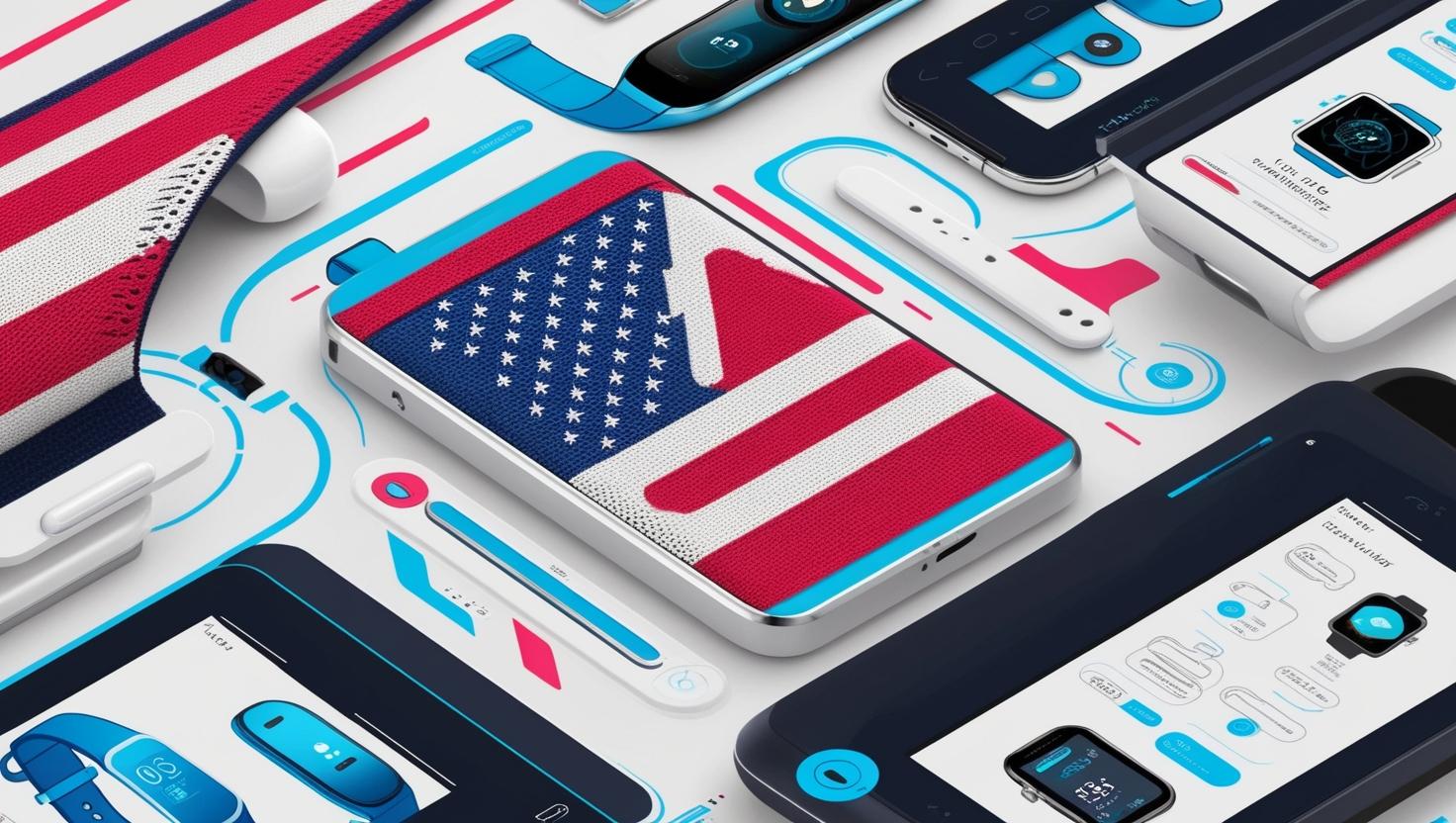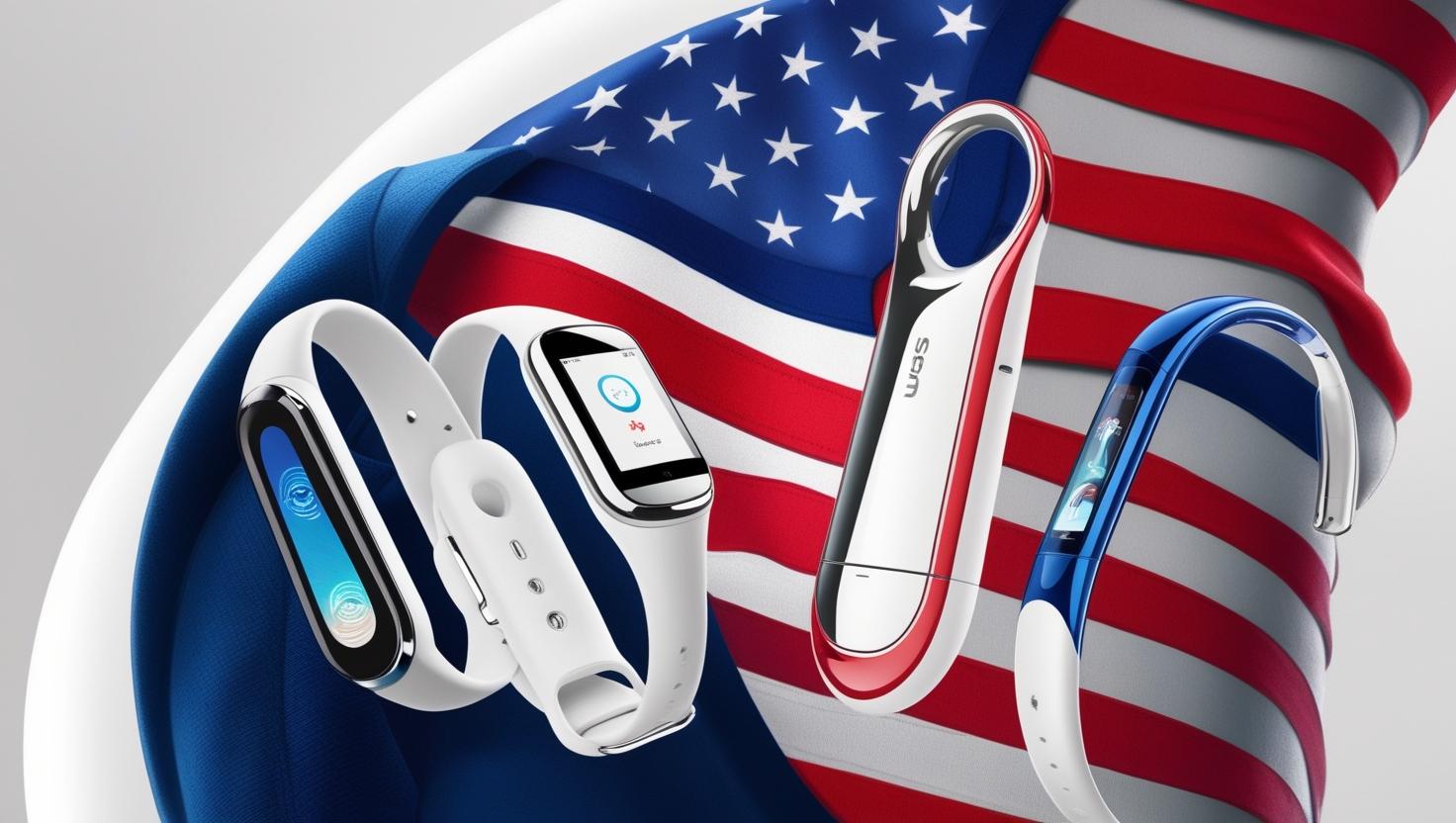Top 10 Opportunities in Wearable Technology Market Post-Trump Tariff
The wearable technology market has experienced rapid growth in recent years, driven by innovations in devices like smartwatches, fitness trackers, and augmented reality glasses. However, the global trade landscape shifted dramatically with the imposition of tariffs during the Trump administration, particularly targeting goods from China—a major hub for electronics manufacturing.
From reshoring manufacturing to pioneering new technologies, these opportunities highlight the resilience and potential of the wearable tech industry in a tariff-altered world. Whether you're a manufacturer, investor, or tech enthusiast, understanding these trends can provide valuable insights into the future of wearable technology.

Here are the Top 10 Opportunities that have emerged in the wearable technology industry post-Trump tariffs:
Reshoring of Manufacturing: Bringing Production Home
The Trump tariffs have significantly raised the cost of importing wearable technology components and finished products from China, prompting companies to explore domestic manufacturing as a strategic alternative. Reshoring, or bringing production back to the United States, offers a way to bypass tariffs, reduce shipping delays, and enhance supply chain control.
Opportunity
Cost Mitigation: By producing locally, companies avoid import duties, which can erode profit margins on devices like smartwatches and fitness trackers.
Job Creation: Domestic manufacturing boosts employment, aligning with economic policies that incentivize local production through tax breaks or subsidies.
Brand Appeal: Products labeled "Made in the USA" can attract consumers who value patriotism or distrust foreign manufacturing due to geopolitical tensions.
Real-World Impact
Companies like Apple have already taken steps toward diversification, with plans to shift some production to countries like India and Vietnam. However, reshoring to the U.S. remains appealing due to proximity to a key market. For instance, a hypothetical wearable tech startup could establish a facility in Texas, leveraging local talent and infrastructure to produce smart glasses, avoiding the 25% tariff on Chinese imports.
Challenges and Solutions
Reshoring requires significant investment in factories, equipment, and workforce training. The U.S. may also lack the specialized labor pool found in Asia. To overcome this, companies can partner with universities for training programs or adopt automation to reduce labor needs, ensuring competitiveness against lower-cost foreign producers.
Future Outlook
As tariffs persist, reshoring could spark a renaissance in American manufacturing, with wearable tech leading the charge. This shift not only mitigates tariff impacts but also fosters innovation in production techniques tailored to domestic needs.
Request Trump Tariff Threat Assessment Analysis Now: https://www.marketsandmarkets.com/forms/ctaTariffImpact.asp?id=983
Investment in Automation and AI: Revolutionizing Production
With tariffs increasing manufacturing costs, wearable technology companies are turning to automation and artificial intelligence (AI) to streamline operations and maintain profitability. These technologies reduce reliance on labor-intensive processes, offsetting the financial burden of tariffs.
How It Works
Robotics: Automated assembly lines can produce wearable devices with precision and speed, minimizing human error.
AI Optimization: Machine learning algorithms enhance quality control, predict equipment failures, and optimize supply chain logistics.
3D Printing: Advanced manufacturing techniques allow rapid prototyping and small-batch production, ideal for custom wearables.
Benefits
Automation lowers production costs over time, making it feasible to absorb tariff increases without raising prices. It also accelerates time-to-market, a critical edge in the fast-evolving tech sector. For example, a company like Fitbit could deploy robotic arms to assemble fitness trackers, cutting labor costs by 20% and boosting output.
Case Studies
Tesla, while not a wearable technology firm, exemplifies automation’s potential, using AI-driven systems to enhance efficiency. In the wearable space, companies like Garmin could adopt similar strategies, integrating AI to monitor production quality in real time, reducing defects by up to 15%.
Challenges
The upfront cost of automation is high, and integrating these systems requires technical expertise. Worker displacement is another concern, though retraining programs can transition employees into roles managing automated systems or focusing on innovation.
Development of Tariff-Avoidance Strategies: Smart Sourcing
The tariffs have pushed companies to rethink supply chains, leading to tariff-avoidance strategies that minimize costs without sacrificing quality. This involves sourcing components from countries not subject to high duties or reclassifying products to fit lower-tariff categories.
Strategic Approaches
Alternative Sourcing: Shift procurement to nations like South Korea or Taiwan for microchips and batteries, avoiding China’s tariffed goods.
Product Redesign: Modify wearable devices to use components from tariff-exempt regions, maintaining functionality while reducing costs.
Customs Optimization: Work with trade experts to classify products under codes with lower duties, a legal yet complex tactic.
Opportunities Unleashed
This shift fosters new global partnerships and diversifies supply chains, reducing reliance on a single region. A smartwatch maker, for instance, could source displays from Japan and assemble in Mexico, slashing tariff expenses by 10-15%.
Practical Examples
Companies like Samsung, with diversified manufacturing in Vietnam, illustrate how strategic sourcing mitigates tariff impacts. Wearable technology firms can follow suit, collaborating with suppliers in Southeast Asia to maintain cost-effectiveness.
Hurdles
Redesigning products or renegotiating supplier contracts takes time and resources. Regulatory compliance across borders adds complexity. However, the long-term savings and resilience gained outweigh these initial costs.
Future Potential
Tariff-avoidance strategies not only address immediate challenges but also position companies for agility in future trade disruptions, a vital trait in the volatile tech market.
Focus on High-Value Wearables: Premium Innovation
Since tariffs are a percentage of import value, their impact is less pronounced on high-value wearables, encouraging companies to shift toward premium products where margins can absorb added costs.
Expansion of Wearable Technology in Healthcare: A Niche Advantage
The healthcare sector offers a promising opportunity for wearable technology post-tariff, as medical devices may face different tariff rules or exemptions, and demand for health-focused wearables is surging.
Applications
Devices like smart patches for glucose monitoring or wearables for elderly care could see increased adoption. For example, a company developing a tariff-exempt heart rate monitor could gain a cost advantage over general-purpose fitness trackers.
Market Impact
Fitbit’s integration with Google Health signals the industry’s pivot toward medical applications. Tariffs could amplify this shift, encouraging firms to prioritize healthcare wearables over consumer gadgets.
Obstacles
Regulatory approval for medical devices is stringent, and development costs are high. However, the long-term payoff in a growing market justifies the effort.
Future Promise
Wearable technology in healthcare could become a tariff-resistant stronghold, blending innovation with societal impact.

Growth in Wearable Technology for Industrial Applications: Efficiency Boost
Industries hit hard by tariffs are seeking cost-saving solutions, creating a niche for wearable tech in industrial applications to enhance productivity and safety.
Opportunity Scope
A manufacturing plant facing tariffed imports might invest in wearables to cut operational costs elsewhere, opening a new market for tech providers. For instance, an AR headset reducing training time by 30% could justify its cost.
Real-World Potential
Companies like Honeywell already use wearables for industrial efficiency. Tariff pressures could accelerate adoption across sectors like logistics and construction.
Challenges
Industrial wearables require durability and customization, increasing production costs. Convincing traditional industries to adopt tech is another hurdle.
Market Expansion
This opportunity could diversify wearable technology beyond consumer markets, creating a stable revenue stream amidst tariff disruptions.
Enhanced Data Security and Privacy Features: Building Trust
Geopolitical tensions tied to tariffs have heightened concerns over data security, pushing companies to prioritize enhanced privacy features in wearable tech as a competitive edge.
Implementation
Wearables could integrate end-to-end encryption, local data storage, or blockchain for secure health records. A fitness tracker advertising "100% data privacy" could stand out in a crowded market.
Examples
Apple’s emphasis on privacy in its Apple Watch sets a benchmark. Smaller firms could replicate this, targeting enterprises wary of data breaches.
Challenges
Advanced security increases development costs and may slow device performance. Balancing usability with protection is key.
Future Edge
As trust becomes a currency, wearables with superior security could dominate post-tariff markets.
Partnerships with Non-Tariff Countries: Global Collaboration
Collaborating with manufacturers in non-tariff countries like Vietnam or Mexico offers a way to sidestep duties while expanding global reach.
Innovation in Battery and Power Technologies: Self-Reliance
Tariffs on Chinese batteries have spurred innovation in power technologies, reducing dependence on imported components critical to wearable technology industry.
Potential
A startup creating a solar-powered fitness band could avoid tariffed battery imports, cutting costs by 10%. Research into graphene batteries could yield breakthroughs, too.
Industry Trends
Companies like Samsung are exploring flexible batteries. Tariffs could accelerate such efforts, benefiting the entire sector.
Barriers
R&D is costly and time-intensive. Partnerships with universities or government grants can offset expenses.
Long-Term Gain
Innovative power solutions could redefine wearable tech, making it more sustainable and tariff-resistant.
Rise of Open-Source Wearable Tech Platforms: Community Power
The open-source movement offers a way to bypass tariffed corporate supply chains, fostering community-driven wearable tech development.
Advantages
This democratizes innovation, appealing to hobbyists and small businesses. It also cuts reliance on big manufacturers hit by tariffs.
Challenges
Quality control and scalability are issues. Certification for consumer markets adds complexity.
Future Vision
Open-source wearables could disrupt the industry, offering affordable, adaptable alternatives in a tariffed landscape.
A New Era for Wearable Technology Industry
The Trump tariffs have reshaped the wearable technology market, presenting both challenges and unprecedented opportunities. From reshoring manufacturing to embracing open-source platforms, companies are finding innovative ways to navigate this complex environment. These top 10 opportunities—spanning production, technology, and market strategies—demonstrate the industry’s adaptability and potential for growth.
80% of the Forbes Global 2000 B2B companies rely on MarketsandMarkets to identify growth opportunities in emerging technologies and use cases that will have a positive revenue impact.
- Leading Automated Guided Vehicle Companies 2024: An In-depth Analysis
- CHARGED UP: SHIFT TO E-MOBILITY AND THE EVOLUTION OF TRANSPORTATION
- Global Automotive Market: Predictions For 2024
- Revolutionizing Depot Charging: Hockey Stick Growth on the Cards
- The Future of Silicon Battery Industry: Innovations and Market Outlook

